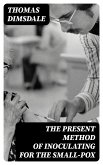In "An Account of the Manner of Inoculating for the Small Pox in the East Indies," J. Z. Holwell provides a pioneering exploration of an early method of inoculation that predated widespread acceptance in the West. The book is rich in empirical observations and detailed descriptions of the inoculation practices observed among Indian populations during the 18th century, framed within the context of burgeoning Western medical science. Holwell'Äôs narrative merges travelogue with scientific inquiry, presenting a vivid account that not only chronicles the procedure but also delves into cultural attitudes towards disease and healthcare in the East Indies. J. Z. Holwell was an English surgeon and author, deeply engaged with the scientific and cultural exchanges of his time. His firsthand observations stem from his time in India during the period of British colonial expansion, a context that imbued him with a keen appreciation for indigenous medical practices. His work serves as a bridge between Eastern and Western medicinal philosophies, positioning him as a critical figure in the field of medical anthropology. This seminal text is highly recommended for scholars, historians, and those interested in the evolution of medical practices. Holwell'Äôs account not only enriches our understanding of inoculation but also invites readers to reflect on the cross-cultural dialogues in medicine, emphasizing the necessity of integrating diverse medical traditions in contemporary health discussions.
Dieser Download kann aus rechtlichen Gründen nur mit Rechnungsadresse in A, B, BG, CY, CZ, D, DK, EW, E, FIN, F, GR, H, IRL, I, LT, L, LR, M, NL, PL, P, R, S, SLO, SK ausgeliefert werden.









